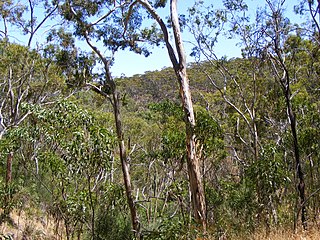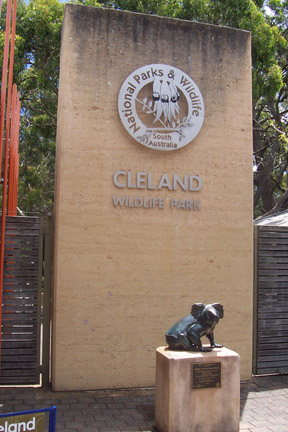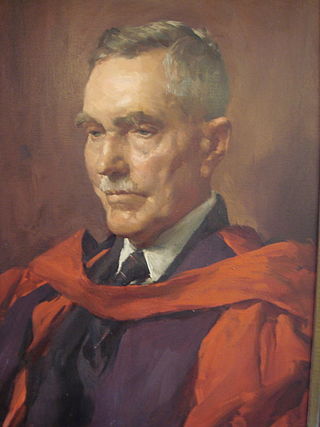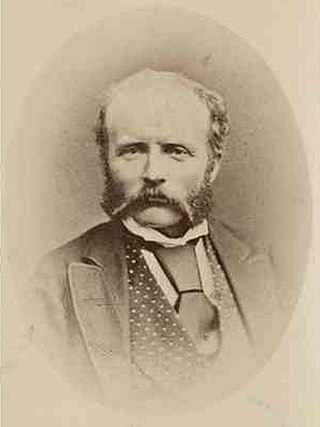Related Research Articles

Belair National Park is a protected area in Belair, South Australia, 9 kilometres southeast of Adelaide city centre; it covers an area of 835 hectares. It was proclaimed in 1891 and was the first national park in South Australia, second in Australia and the tenth in the world. The national park lies within the Adelaide Hills and Mitcham council area, and forms part of a chain of protected areas located along the Adelaide Hills Face Zone. The national park is administered by the Department of Environment, Water and Natural Resources.

Flinders Chase National Park is a protected area in the Australian state of South Australia located at the west end of Kangaroo Island about 177 kilometres west-south west of the state capital of Adelaide and 110 kilometres west of the municipal seat of Kingscote. It is a sanctuary for endangered species and home to a few geological phenomena. It was the second national park to be declared in South Australia.

Cleland National Park, formerly Cleland Conservation Park, is a protected area located in the Adelaide Hills, South Australia about 22 kilometres (14 mi) south-east of the Adelaide city centre. It conserves a significant area of natural bushland on the Adelaide Hills face, including Mount Lofty Summit and Waterfall Gully.

Sir John Burton Cleland CBE was a renowned Australian naturalist, microbiologist, mycologist and ornithologist. He was Professor of Pathology at the University of Adelaide and was consulted on high-level police inquiries, such as the famous Taman Shud Case in 1948 and later. He also studied the transmission of dengue virus by the mosquito Stegomyia fasciata.

The Yurrebilla Trail is a walking trail passing through the Mount Lofty Ranges in the Adelaide hills area of Adelaide, South Australia, to the east of the Adelaide city centre.

William Harry Tietkens, known as "Harry Tietkens", explorer and naturalist, was born in England and emigrated to Australia in 1859. Tietkens was second in command to Ernest Giles on expeditions to Central Australia in 1873 and on a journey from Beltana, South Australia to Perth, Western Australia in 1875. In 1889 Tietkens led his own expedition west of Alice Springs to the vicinity of the Western Australian border. This expedition discovered Lake Macdonald, the Kintore Range, Mount Leisler, Mount Rennie, the Cleland Hills, defined the western borders of Lake Amadeus, and photographed Uluru and Kata Tjuta for the first time. The expedition collected new species of plants and rock samples allowing the South Australian government geologist to compile a 'geological sketch' of the country traversed. Tietkens was elected a fellow of the Royal Geographical Society on his return. Specimens of 250 plant species were collected, although only 8 were new to science, and in 1890, Ferdinand von Mueller and Ralph Tate named Eremophila tietkensii in his honour.
The Royal Society of South Australia (RSSA) is a learned society whose interest is in science, particularly, but not only, of South Australia. The major aim of the society is the promotion and diffusion of scientific knowledge, particularly in relation to natural sciences. The society was originally the Adelaide Philosophical Society, founded on 10 January 1853. The title "Royal" was granted by Queen Victoria in October 1880 and the society changed its name to its present name at this time. It was incorporated in 1883. It also operates under the banner Science South Australia.
The Western Australian Naturalist, is the peer-reviewed scientific journal of the Western Australian Naturalists' Club. It publishes original research on topics related to the natural history of Western Australia.
John Fullerton Cleland was a Protestant Christian missionary who served with the London Missionary Society during the late Qing Dynasty China. He emigrated to South Australia, where he and his wife founded a family of considerable influence.
W. H. Burford and Sons was a soap and candle-making business founded in Adelaide in 1840 by William Henville Burford (1807–1895), an English butcher who arrived in the new colony in 1838. It was one of the earliest soapmakers in Australia, and up to the 1960s when it closed, the oldest. In 1878 he took his two sons Benjamin and William into partnership as W. H. Burford & Sons. Its expansion, accompanied by a number of takeovers, made it the dominant soap manufacturer in South Australia and Western Australia. Its founders were noted public figures in the young city of Adelaide.
Adelaide Racing Club was a horse racing club which had its origins around 1870 but founded in 1879 in competition with the South Australian Jockey Club. The A.R.C. held their race meetings on the "Old Adelaide Racecourse" which they rented from the Adelaide City Council, while the S.A.J.C. owned Morphettville Racecourse freehold.

Thomas Harvey Johnston was an Australian biologist and parasitologist. He championed the efforts to eradicate the invasive prickly pear.

Thomas Drury Smeaton trained in England as an engineer, emigrated to the British colony of South Australia, where he was known as a banker and amateur scientist.
Elphinstone Davenport Cleland was a journalist and mine manager in South Australia and Western Australia.
The first Tattersall's Club in Adelaide was founded in 1879 and folded in 1886. It was revived as the South Australian Tattersalls Club in 1888 and prospered as a gentlemen's club, whose membership was chiefly composed of men who enjoyed gambling on horse races.
Horatio Thomas Whittell MD., MRCS., generally referred to as H. T. Whittell or H. Thomas Whittell, was a medical doctor in South Australia and Adelaide's City Coroner.
William Lennox Cleland was a medical doctor in South Australia, for 40 years in charge of Parkside Lunatic Asylum.
Nixon-Skinner Conservation Park is a protected area located in the Australian state of South Australia in the locality of Myponga about 55 kilometres (34 mi) south of the state capital of Adelaide and about 3.5 kilometres (2.2 mi) south-west of the town of Myponga.
South Australian Literary Societies' Union (1883–1926) was a peak or advocacy organisation of literary societies in South Australia. It organised competitions between the member societies and established a "Union Parliament" to debate issues of the day.
Charles Albert Edward Fenner was an Australian geologist, naturalist, geographer and educator.
References
- ↑ "Register of Clubs". Australian Naturalists' Network. 9 September 2013. Retrieved 2 April 2024.
- ↑ "Adelaide Philosophical Society". South Australian Register . Vol. XLV, no. 10, 577. South Australia. 7 October 1880. p. 2 (Supplement to the South Australian Register.). Retrieved 3 October 2017– via National Library of Australia.
- ↑ William Edward Pickells was a Melbourne insurance man who died by self-inflicted gunshot wound on 28 October 1904
- ↑ "General News". The Express and Telegraph . Vol. XX, no. 5, 958. South Australia. 14 November 1883. p. 2. Retrieved 3 October 2017– via National Library of Australia.
- ↑ "First Branch of Royal Society". The Observer (Adelaide) . Vol. LXXXVI, no. 4, 477. South Australia. 13 April 1929. p. 22. Retrieved 4 October 2017– via National Library of Australia.
- ↑ "Field Naturalists' Excursion". South Australian Register . Vol. XLVIII, no. 11, 555. South Australia. 26 November 1883. p. 7. Retrieved 3 October 2017– via National Library of Australia.
- ↑ "Field Naturalist's Section of the Royal Society of South Australia". Transactions of the Royal Society of South Australia. 19 (2): 289–290. 1895.
- ↑ "Death of Mr. Stirling Smeaton". The Express and Telegraph . Vol. XLVI, no. 13, 653. South Australia. 12 March 1909. p. 1. Retrieved 4 October 2017– via National Library of Australia.
- ↑ "Field Naturalists". The Express and Telegraph . Vol. XXXVI, no. 10, 697. South Australia. 17 June 1899. p. 5. Retrieved 4 October 2017– via National Library of Australia.
- ↑ "Long Public Career". The News (Adelaide) . Vol. IX, no. 1, 382. South Australia. 19 December 1927. p. 11. Retrieved 19 July 2018– via National Library of Australia.
- ↑ "Obituary". The Observer (Adelaide) . Vol. LXXXIII, no. 7, 041. South Australia. 30 October 1926. p. 54. Retrieved 4 October 2017– via National Library of Australia.
- ↑ "The Field Naturalists Society of South Australia inc" . Retrieved 4 October 2017.
- ↑ "Move for Outer Belt of Parks". The Advertiser (Adelaide) . Vol. 91, no. 28089. South Australia. 16 October 1948. p. 3. Retrieved 4 October 2017– via National Library of Australia.
- ↑ Royal Society of South Australia. Field Naturalists' Section; Informit (1919), "South Australian naturalist : the journal of the field naturalists' section of the Royal society of South Australia", South Australian Naturalist, Felstead and Omsby, ISSN 0038-2965
- ↑ Field Naturalists' Society of South Australia (1919). The South Australian Naturalist. Adelaide, SA.
{{cite book}}: CS1 maint: location missing publisher (link)